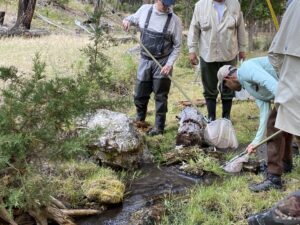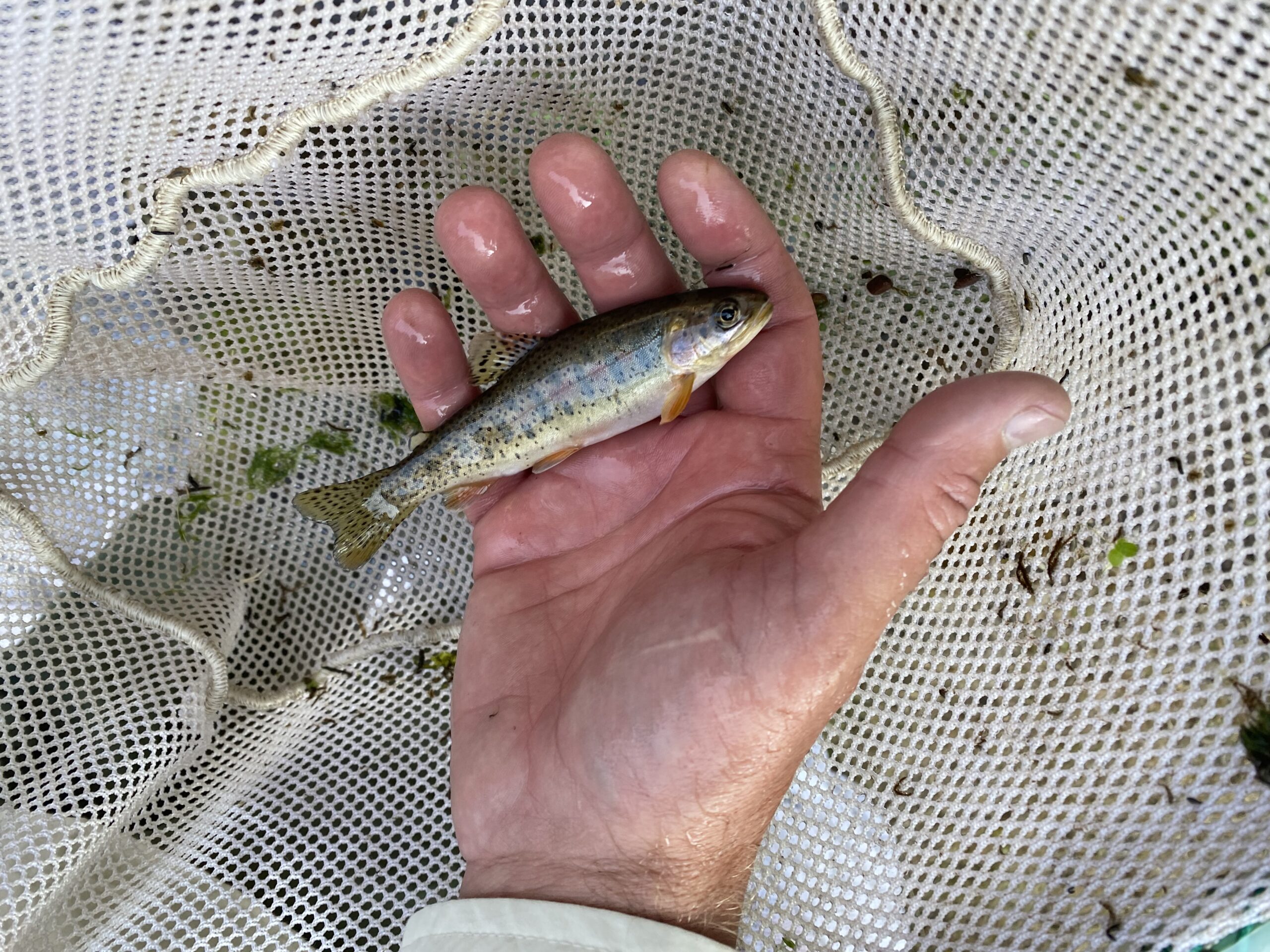Practically every Rocky Mountain Elk Foundation habitat project benefits elk but can such efforts support and sustain fish at the same time? The truth is a myriad of RMEF conservation projects do exactly that. This is one of them.
First, some background. A landowner generously donated 3,450 acres of wildlife habitat to RMEF about 45 miles east of its Missoula, Montana, headquarters in 2020. The headline of the Bearmouth property acquisition was it supplies critical winter range for elk, whitetail and mule deer. However, reading between the lines, highlighted by recent hands-on work as part of an ongoing study, tells an expanded conservation story – one that benefits trout.
Four miles of perennial streams cross the property, including the spring-fed yet small and degraded Ryan Creek. Still, it is home to native westslope cutthroat trout which is why RMEF partnered with Trout Unlimited (TU) and Montana Fish, Wildlife & Parks (FWP) to improve and restore half of a mile of the waterway.
RMEF funding generated by Montana volunteers that hosted fundraising banquets currently supports the project but that may expand with a future FWP grant. The project includes weed control, revegetation and stream restoration using a mix of instream habitat enhancement, such as wood placement and plantings to improve habitat complexity. One or more culverts may be removed to improve fish passage and the project will be fenced to reduce grazing pressure from cattle.
The project kicked off with biologists conducting genetic testing. Once the purity of the fish was confirmed (believed to be 99.1 percent non-hybridized or pure), FWP, TU and RMEF combined to perform a baseline survey using electroshocking as a tool to collect population data. Electroshocking temporarily stuns the fish so that it can be identified and measured. Once the data is recorded, the fish are released back into the stream.
“This was my first electroshocking fish survey, and I was amazed that we found over 150 stunted cutthroats in a 200-meter stretch of a tiny water body that can barely be described as a creek,” said Ryan Chapin, RMEF lands operations manager. “This habitat enhancement project will greatly improve the stream and I suspect the next time we do the survey in three or four years, we will be even more amazed by the results, including more plentiful and larger westslope cutthroat trout. This population might even be used as a seed source for other repopulations efforts across the state.”

The Bearmouth landscape also supplies important habitat for moose, mountain lions, black bears, small mammals and other nongame, songbirds, raptors, insects and on and on.
Earlier habitat enhancement work includes several rounds of noxious weed treatments.
RMEF continues efforts to formulate a management and long-term ownership plan for the property.
(Photo credit: Rocky Mountain Elk Foundation)
